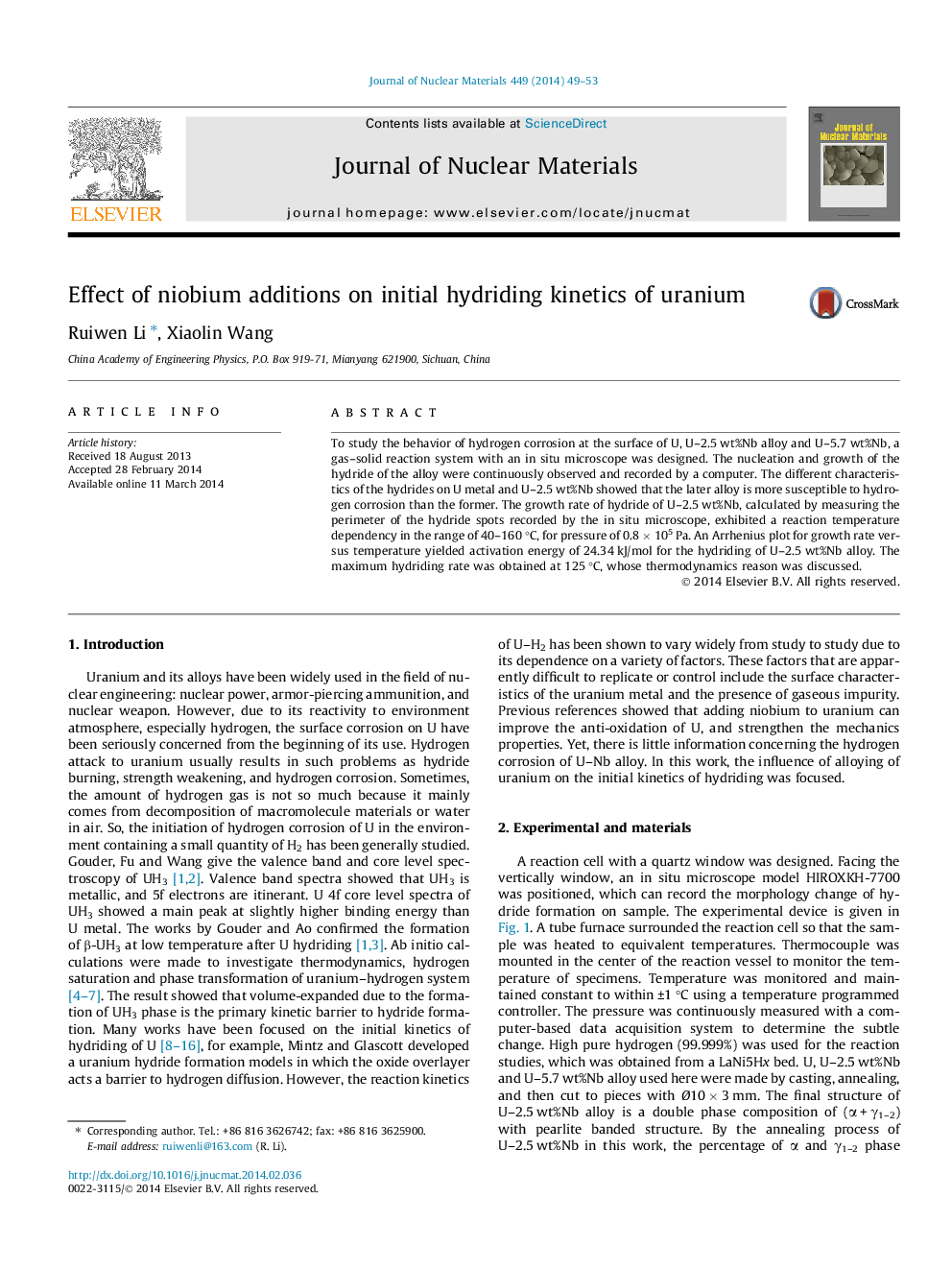| Article ID | Journal | Published Year | Pages | File Type |
|---|---|---|---|---|
| 7967767 | Journal of Nuclear Materials | 2014 | 5 Pages |
Abstract
To study the behavior of hydrogen corrosion at the surface of U, U-2.5 wt%Nb alloy and U-5.7 wt%Nb, a gas-solid reaction system with an in situ microscope was designed. The nucleation and growth of the hydride of the alloy were continuously observed and recorded by a computer. The different characteristics of the hydrides on U metal and U-2.5 wt%Nb showed that the later alloy is more susceptible to hydrogen corrosion than the former. The growth rate of hydride of U-2.5 wt%Nb, calculated by measuring the perimeter of the hydride spots recorded by the in situ microscope, exhibited a reaction temperature dependency in the range of 40-160 °C, for pressure of 0.8 Ã 105 Pa. An Arrhenius plot for growth rate versus temperature yielded activation energy of 24.34 kJ/mol for the hydriding of U-2.5 wt%Nb alloy. The maximum hydriding rate was obtained at 125 °C, whose thermodynamics reason was discussed.
Related Topics
Physical Sciences and Engineering
Energy
Nuclear Energy and Engineering
Authors
Ruiwen Li, Xiaolin Wang,
